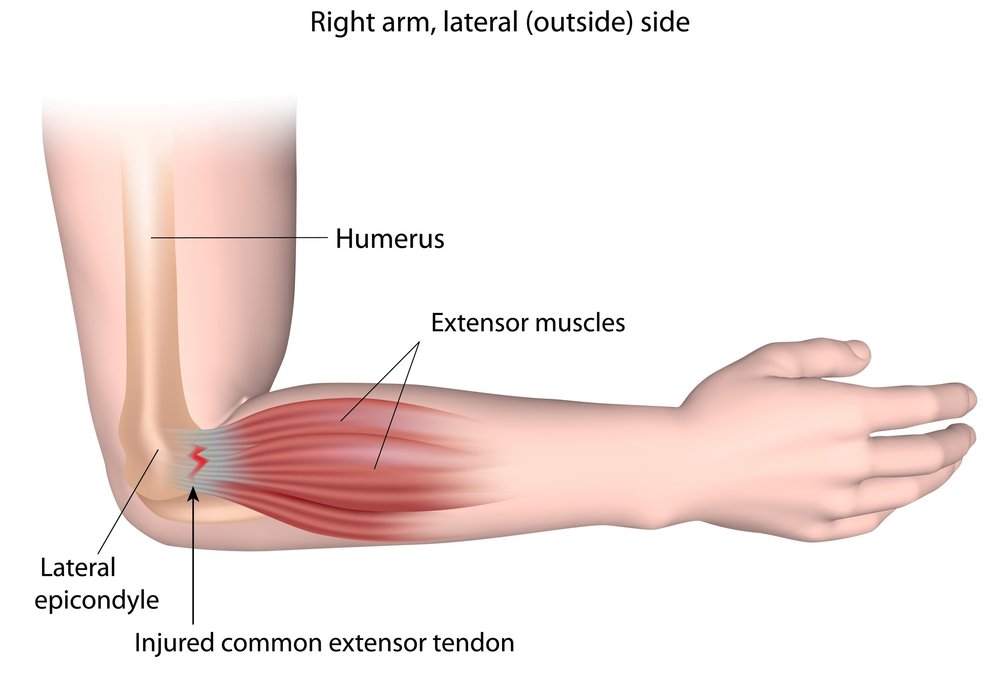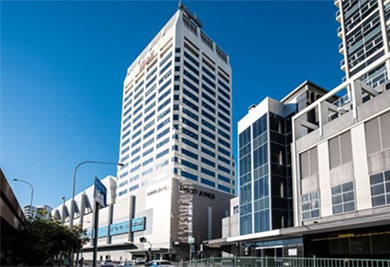What is Tennis Elbow?
Acute Tennis Elbow is an injury to the muscles that extend the wrist and fingers. The site of injury is typically the lateral epicondyle, a bony bump on the outside of the elbow where these muscles attach. Tennis Elbow symptoms that have lasted more than 6 weeks are considered to be sub-acute and beyond three months, as chronic tennis elbow.
What are Tennis Elbow Symptoms?
Typically the Tennis Elbow sufferer will experience pain when performing gripping tasks or resisted wrist/finger extension. Pain can also be present when the muscles are stretched. There will be tenderness directly over the bony epicondyle, and there may be trigger points in the wrist muscles.
Some sufferers will also have neck stiffness and tenderness, as well as signs of nerve irritation. Most elbow movements will be pain-free, despite that being the area of pain.
What Causes Acute Tennis Elbow?
Acute Tennis Elbow is caused by damaged muscle tissue at the point it anchors to the arm bone at the elbow. It occurs when more force is applied to an area than the normal healthy tissues can handle.
Common Tennis Elbow Causes include:
- Unaccustomed hand use. eg painting a fence, hammering, lots of typing.
- Excessive gripping or wringing activities
- Poor forearm muscle strength or tight muscles
- Poor technique (this may be a poor tennis shot)
In some cases, such as Chronic Tennis Elbow, this can occur due to the soft tissues being in poor health, which are easily injured. Inflammation follows the injury, which leads to swelling and elbow pain.
What Causes Chronic Tennis Elbow?
Chronic Tennis Elbow is associated with degenerative changes in the muscle tissues located at the epicondyle. Although for a long time this was thought to be related to inflammation from overuse, this is now known to be incorrect.
Who Suffers Tennis Elbow?
Tennis Elbow occurs commonly in the community. It is present in 40% of all tennis players (hence it’s name) and 15% of people working in repetitive manual trades. It can occur at any age, however, sufferers are generally between the ages of 35 and 50.
Predictably, the side affected is usually associated with handedness, but it can occur in the non-dominant arm. Males and Females are affected equally.
Tennis Elbow Treatment
Physiotherapy has been shown to be effective in the short and long-term management of tennis elbow. Physiotherapy aims to achieve a:
- Reduction of elbow pain.
- Facilitation of tissue repair.
- Restoration of normal joint range of motion and function.
- Restoration of normal muscle length, strength and movement patterns.
There are many ways to achieve these and, following a thorough assessment of your elbow, arm and neck, the best strategy for you to use based on your symptoms and your lifestyle. Results are typically measured through patient feedback and measurement of pain-free grip strength.
Treatment can include, EWST Shockwave therapy, muscle stretches, and strengthening.




